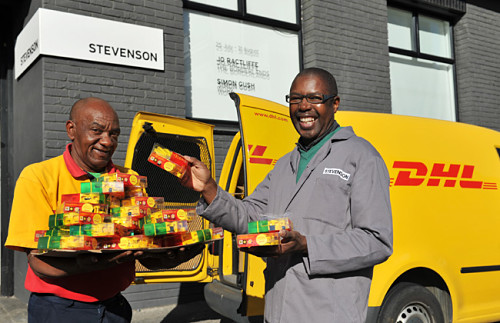DHL to Invest Millions in Sub-Saharan Africa

Logistics leader DHL has joined the ranks of companies taking advantage of Sub-Saharan Africa’s potential for economic growth, which experts anticipate will coincide with continued improvements in infrastructure.
While the number of foreign direct investments (FDI) has decreased in recent years, capital investment in Africa has largely increased. Today’s average investment is US$174.5 million per project, up from US$67.8 million in 2013.
“The perception of investing in Africa has traditionally been rather negative, coupled with the fear of the unknown,” said Managing Director of DHL’s Sub-Saharan Africa region, Charles Brewer. “However, in 2014, traditional investors refocused their attention on the continent, attracted by its strong macroeconomic growth and outlook, improving business environment, a rising consumer class, abundant natural resources and infrastructure development.”
Improvements in infrastructure can be extremely cost-effective in developing regions, where underdeveloped infrastructure tends to increase costs for people and companies like DHL. According to African Business Review, supply chain costs are up to nine times more expensive in Africa than other regions around the world. Investments in infrastructure projects help streamline the supply chain and thus create more favorable economic environments for foreign and domestic companies alike.
According to economist and director of the Earth Institute at Columbia University, Jeffrey Sachs, Africa will need to adopt an infrastructure-heavy plan to achieve double-digit economic growth in the coming years. According to him, that program ought to include large-scale investments in trans-national infrastructure projects in the way of power, roads, broadband and other basic infrastructural needs.
“There is no choice; Africa needs 10 percent per year of economic growth over the next 15 years,” Sachs said.
One institution working to increase investment in these infrastructure projects is the European Investment Bank (EIB), which plans to open offices in Cameroon, Ivory Coast, Zambia and Mozambique within the next year. Investments like the EIB’s US$43.8 million water and sanitation project in Ethiopia will help narrow what The World Bank estimates to be a US$93 million funding gap for African infrastructure development.
“Growth will remain strong in most low-income countries, owing to infrastructure investment and agriculture expansion,” wrote The World Bank in its outlook for Africa earlier this year. “However, extreme poverty remains high across the region. Foreign Direct Investments fell in 2014, reflecting slower growth in emerging markets and declining commodity prices. Several countries including Cote d’Ivoire, Kenya and Senegal, were able to tap international bond markets to finance infrastructure projects.”
As companies like DHL continue to invest in infrastructural improvements across the African continent, businesses will become better able to minimize the challenges resulting from a lack of reliable power and other supply-side obstacles. Streamlining the supply chain in developing countries can also save massive amounts of money for American companies hoping to tap into new and emerging markets. If such investment continues, Africa might well meet its goal of double-digit economic growth within the next 10 years, and regional markets could become the forces for poverty reduction that economists like Jeffrey Sachs believe they can be.
– Zach VeShancey
Sources: Daily Independent, African Business Review, MG Africa, The World Bank
Photo: AfricanBrains/span>
